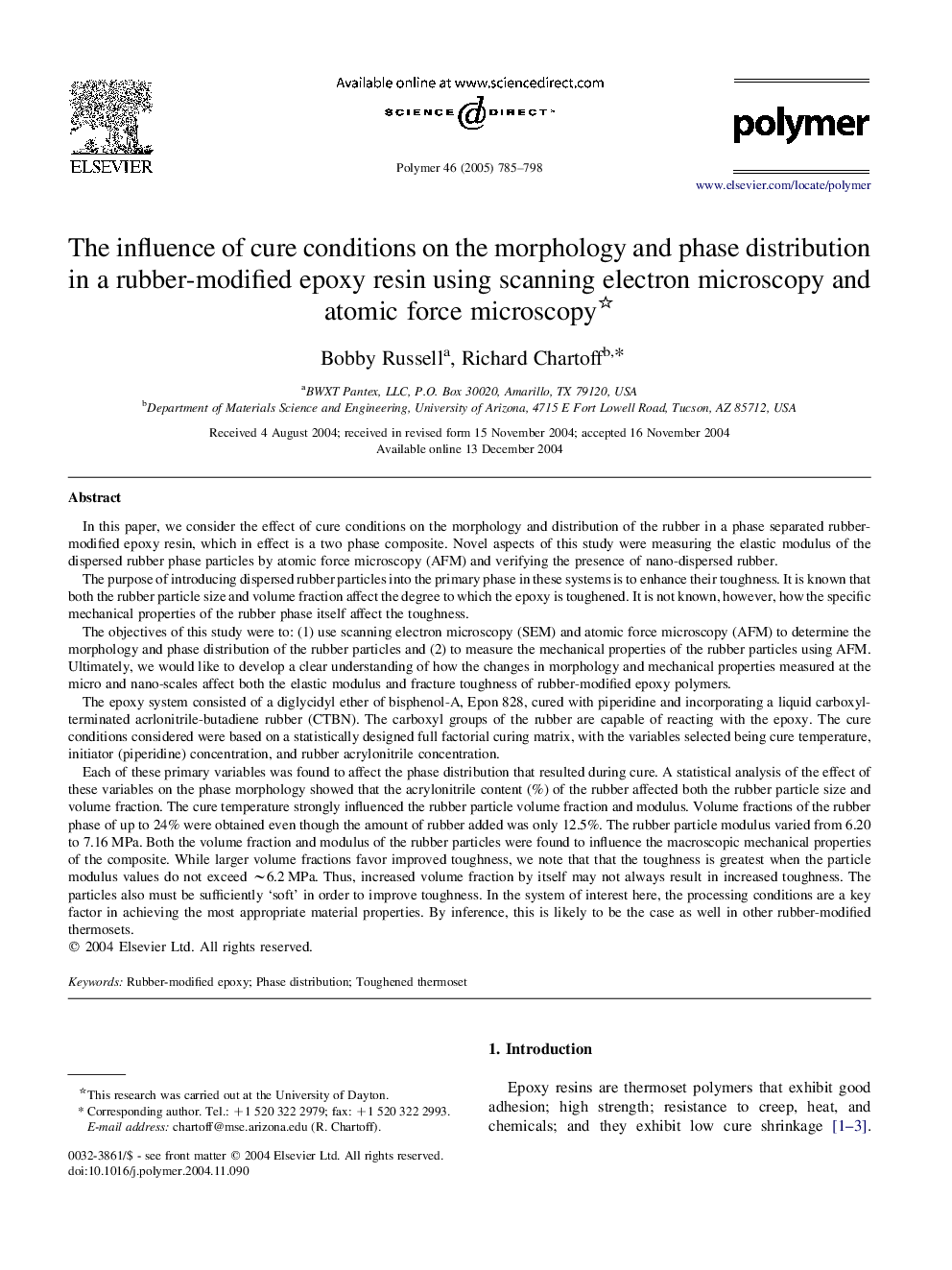| Article ID | Journal | Published Year | Pages | File Type |
|---|---|---|---|---|
| 9559324 | Polymer | 2005 | 14 Pages |
Abstract
Each of these primary variables was found to affect the phase distribution that resulted during cure. A statistical analysis of the effect of these variables on the phase morphology showed that the acrylonitrile content (%) of the rubber affected both the rubber particle size and volume fraction. The cure temperature strongly influenced the rubber particle volume fraction and modulus. Volume fractions of the rubber phase of up to 24% were obtained even though the amount of rubber added was only 12.5%. The rubber particle modulus varied from 6.20 to 7.16Â MPa. Both the volume fraction and modulus of the rubber particles were found to influence the macroscopic mechanical properties of the composite. While larger volume fractions favor improved toughness, we note that that the toughness is greatest when the particle modulus values do not exceed â¼6.2Â MPa. Thus, increased volume fraction by itself may not always result in increased toughness. The particles also must be sufficiently 'soft' in order to improve toughness. In the system of interest here, the processing conditions are a key factor in achieving the most appropriate material properties. By inference, this is likely to be the case as well in other rubber-modified thermosets.
Related Topics
Physical Sciences and Engineering
Chemistry
Organic Chemistry
Authors
Bobby Russell, Richard Chartoff,
